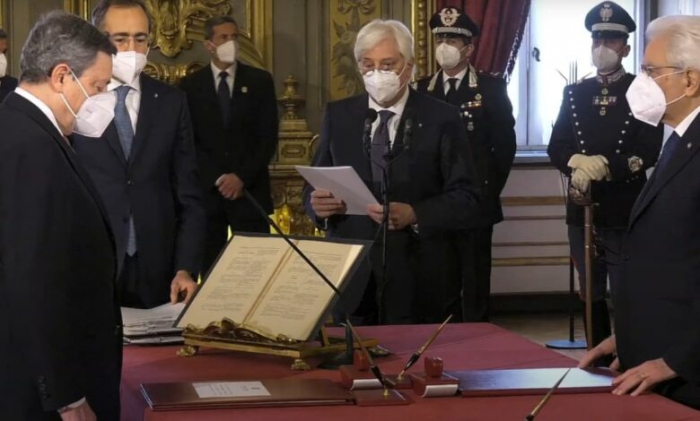The Italian president swore in the former chief of the European Central Bank, Mario Draghi, as prime minister on Saturday at the head of a unity government called on to confront the coronavirus crisis and economic slump.
All but one of Italy’s major parties have rallied to his side and his cabinet includes lawmakers from across the political spectrum, as well as technocrats in key posts, including the finance ministry and a new green transition portfolio.
Much now rests on Draghi’s shoulders.
He is tasked with plotting Italy’s recovery from the pandemic and must immediately set to work on plans for how to spend more than 200 billion euros ($240 billion) in European Union funds aimed at rebuilding the recession-bound economy.
If he prevails, Draghi will likely bolster the entire eurozone, which has long fretted over Italy’s perennial problems. Success would also prove to Italy’s sceptical northern allies that by offering funds to the poorer south, they will fortify the entire bloc.
But he faces enormous challenges. Italy is mired in its worst downturn since World War Two, hundreds of people are still dying of COVID-19 each day, the vaccination campaign is going slowly and he only has limited time to sort things out.
Italy is due to return to the polls in two years time, but it is far from certain that Draghi will be able to survive that long at the head of a coalition that includes parties with radically opposing views on issues such as immigration, justice, infrastructure development and welfare.
Highlighting Italy’s political instability, Draghi’s government is the 67th to take office since 1946 and the seventh in the last decade alone.
More about: #Italy
















































